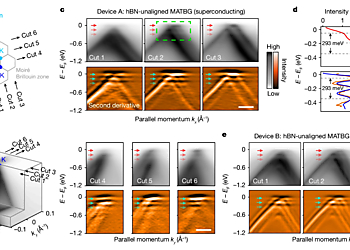Strong Electron–phonon Coupling In Magic-angle Twisted Bilayer Graphene
Result of the Month
Recent advancements in high-throughput X-ray optics, together with high-resolution electron analyser system have empowered us to perform high-quality ARPES measurements with sub-micron spatial precision. This makes it well-suited for unravelling the intricate electronic structure of 2-dimensional artificially-fabricated homo/hetero-structures, such as the MATBG system studied here.

